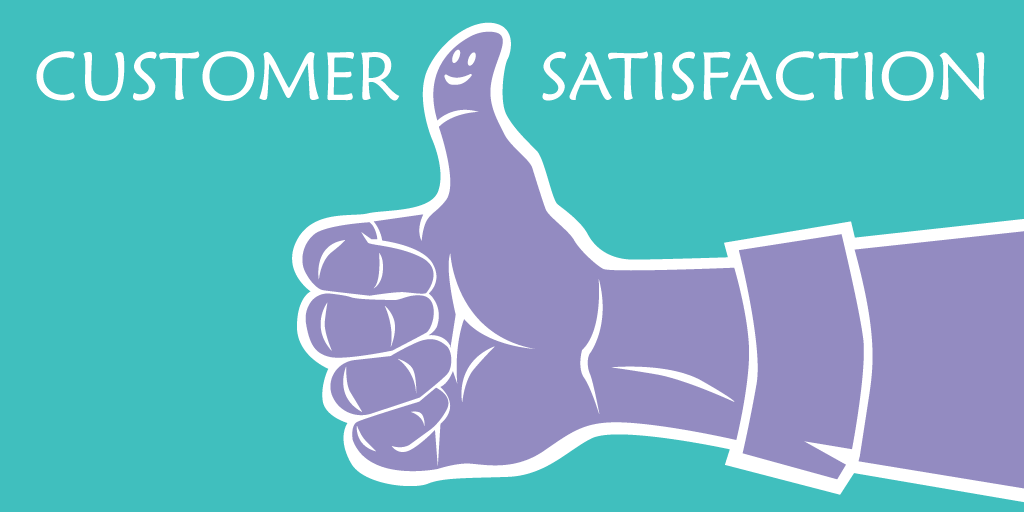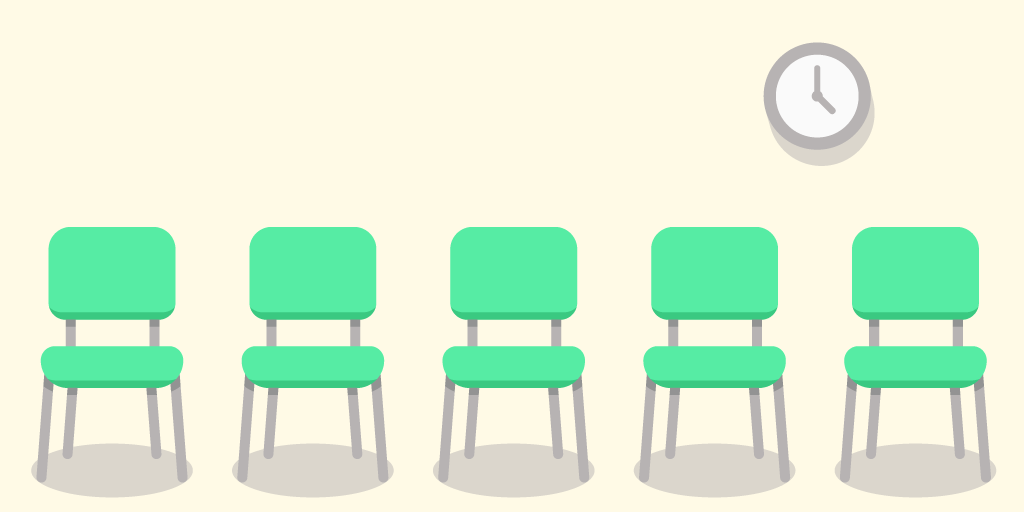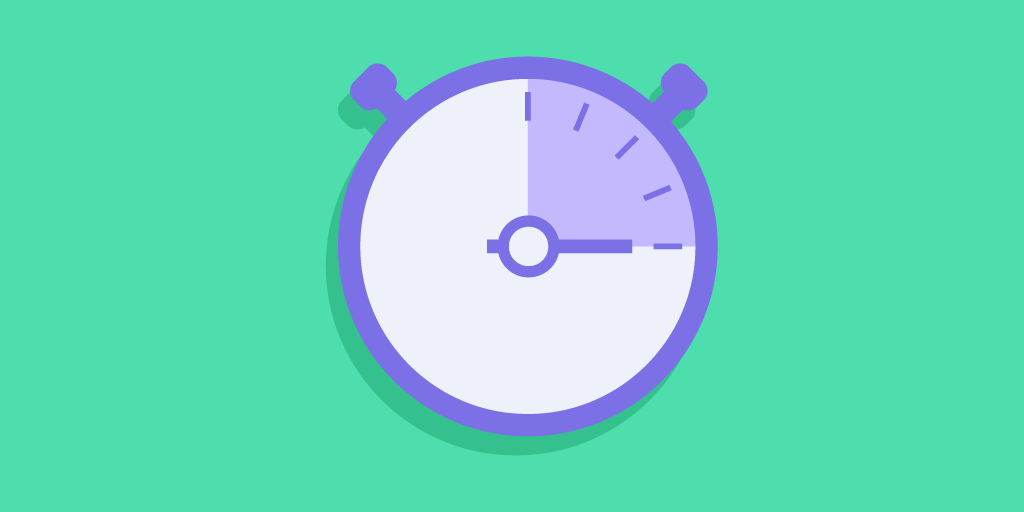Personalized service isn’t just a nice-to-have anymore; it’s becoming a cornerstone for businesses. With industries becoming increasingly competitive, companies are discovering that the quality of their customer service can significantly impact their ability to stand out.
A positive experience can lead to stronger customer loyalty, higher market share, and overall business growth.
In fact, studies have shown that businesses excelling in customer experience have a 14% advantage in their respective markets. Personalized service, in particular, plays a crucial role in this success.
By tailoring interactions to individual needs and preferences, companies can foster deeper connections with their customers, making them feel valued and understood.
Let’s explore how personalized service can elevate customer satisfaction and drive business results.
What Is Personalized Customer Service?
Personalized customer service is the practice of tailoring support, communication, and service experiences to each individual customer’s specific needs, preferences, and history. Instead of offering one-size-fits-all interactions, personalized service treats every customer like a unique person—not just a transaction.
This could mean greeting customers by name, remembering their past visits or purchases, suggesting services based on previous behavior, or offering communication in their preferred channels and tone.
In industries like healthcare, retail, or tech, personalization can improve satisfaction, build trust, and make customers feel truly valued.
What are the importance of personalized customer service?
Personalized customer service offers several key benefits that can significantly enhance both the customer experience and your business operations.
Here are some of the top advantages of personalized customer service:
1. Builds Stronger Customer Relationships
Personalized service makes customers feel recognized and valued, which builds trust and loyalty. When customers know you understand their needs, they form a deeper connection with your brand.
A study shows that 71% of consumers say they would shop more often with companies that provide personalized experiences. This connection leads to stronger, long-term relationships with your customers.
2. Increases Customer Satisfaction
When customers receive a service tailored to their needs, the quality of their experience improves significantly. The importance of personalized customer service lies in its ability to show that you're paying attention to their specific desires and requirements, making them feel valued. This often results in higher satisfaction levels, which directly influences their overall perception of your brand and increases the chances of repeat visits.
3. Encourages Repeat Business
Customers are more likely to return to a business that understands their preferences and tailors their experience accordingly. Personalized service makes them feel valued, leading to a higher likelihood of repeat visits and long-term patronage.
The more relevant and customized the service, the stronger the connection, making customers less likely to switch to competitors.
Also, personalization helps target the right customers with the right message, increasing the likelihood of purchases.
4. Boosts Brand Advocacy
Happy, loyal customers are more likely to recommend your business to others. Personalization fosters this loyalty, turning satisfied customers into brand advocates.
When customers feel valued, they share their positive experiences, helping to improve your brand's reputation.
Personalized service encourages customers to not only return but also spread the word, enhancing your business’s visibility and trust.
5. Provides Better Customer Insights
Offering personalized service often involves gathering and analyzing customer data. This process provides valuable insights into customer preferences, behaviors, and needs. With better insights, businesses can make more informed decisions, refine their strategies, and deliver even more targeted and effective experiences.
7 Practical Tips to Make Your Service More Personalized
Here are seven actionable tips to help you enhance customer satisfaction by personalizing your service. From using customer names to creating a seamless omnichannel experience, these strategies will foster loyalty, improve engagement, and make your customers feel truly valued.
Tip 1: Smile and Make Eye Contact
Smiling is a universal way to convey warmth and approachability.
Research has shown that when we smile, we not only improve our own mood but also trigger positive emotions in those around us. A smile makes us appear friendly and open, signaling to customers that we are eager to help.
It’s contagious—when you smile, customers are more likely to smile back, creating a positive feedback loop that enhances the experience for both parties.
Impact on Service:
Approachability: Smiling and making eye contact makes employees appear more welcoming, breaking down barriers.
Positive Atmosphere: It helps create a friendly environment, which increases customer comfort and satisfaction.
Encourages Engagement: Customers are more likely to engage positively with staff, enhancing their overall experience.
Personalized customer service example:
Disney is a great example of a company that excels in using smiles as part of its customer experience. Their staff members are trained to greet visitors with a smile and make eye contact, ensuring that everyone feels valued and special. This approach is central to Disney’s world-class service and contributes to their reputation for magical customer experiences.
Tip 2: Use Customer Names
Using a customer’s name in conversation is a powerful way to build connection and trust.
Research shows that hearing one’s own name triggers positive emotional responses, making customers feel recognized and valued.
As Dale Carnegie said in How to Win Friends and Influence People, “A person’s name is to that person, the sweetest, most important sound in any language.”
This simple practice not only grabs attention but also helps establish rapport quickly, making customers feel like individuals, not just part of a crowd.
Practical Application:
Greet customers by name when they enter your business or during phone calls.
Use their name throughout the conversation to maintain a personal connection.
Personalize emails, newsletters, and other digital communications with their name to add a human touch.
Train employees to always check customer records and use names during in-person or remote interactions.
Personalized customer service example:
A boutique that addresses its customers by name, such as "Welcome back, Emma! Your new collection is ready to try on," creates a welcoming, personalized environment that encourages return visits and builds customer loyalty.
Tip 3: Use Human-Like Language
Empathetic communication plays a key role in improving customer interactions. When customers feel understood and valued, their experience becomes more positive, and they are more likely to trust your brand.
This ties into how personalized customer service underscores the importance of creating meaningful, one-on-one connections. One of the simplest ways to communicate empathy is through the language you use..
Avoid negatively charged words like "can't," "won't," or "don’t" as they can create barriers in communication. Instead, opt for positive, supportive language that makes the customer feel heard.
Empathy helps establish a deeper connection and fosters a more personal relationship with the customer.
Empathetic Phrases:
"I hear you" instead of "I don’t understand."
"Let me find a solution for you" instead of "I can't help with that."
"I understand how frustrating that must be" instead of "That's not possible.
Personalized customer service example:
In customer service, replacing negative phrasing with more empathetic language can transform the interaction.
For instance, saying “I hear you” instead of “I don’t understand” conveys a much more empathetic tone, making the customer feel that their concerns are taken seriously.
Brands that embrace this approach, such as in Japanese customer service (where “keigo,” or "respectful language," is used), have seen improved customer satisfaction and stronger relationships.
Tip 4: Implement Loyalty Programs
Loyalty programs are a powerful tool for converting one-time buyers into repeat customers. By rewarding customers for their continued patronage, you create a sense of value that encourages them to return.
Not only does this build stronger customer relationships, but it also boosts retention, increases repeat purchases, and drives more consistent revenue.
Loyal customers are typically less sensitive to price changes and are more willing to share feedback, which helps you improve your offerings.
Moreover, studies show that repeat customers contribute significantly to a brand’s revenue—up to 65%..
Types of Loyalty Programs:
Points-Based: Customers earn points for every purchase, which they can redeem for discounts or rewards.
Discount-Based: Customers receive instant discounts after accumulating a certain number of purchases or points.
Tiered Rewards Systems: Customers advance to higher reward levels based on their spending, receiving exclusive perks and benefits at each level.
Personalized customer service example:
Starbucks and Amazon are prime examples of companies that use loyalty programs effectively. Starbucks’ rewards program offers customers points (Stars) for every purchase, which can be redeemed for free drinks, food, or merchandise.
Similarly, Amazon’s Prime membership provides exclusive benefits like free shipping, early access to deals, and personalized discounts, making customers feel valued while encouraging repeat purchases.
Both brands use customer data to tailor rewards, making the experience more personalized and relevant for each shopper.
Helpful read - 4 Levels of Customer Loyalty: How to Keep Your Clients
Tip 5: Collect and Use Customer Data
Data-driven insights give businesses a deeper understanding of customer preferences, behaviors, and needs. By analyzing this data, companies can offer personalized recommendations, promotions, and special offers tailored to each individual.
This highlights the importance of personalized customer service in building stronger relationships—personalized experiences boost engagement and enhance satisfaction. As the customer experience shifts into the digital space, using data becomes essential to understand and meet their expectations.
Best Practices:
Safely collect customer data by ensuring transparency and obtaining consent.
Use data responsibly to create personalized offers that are relevant to the customer.
Respect privacy by adhering to data protection laws and securely storing sensitive information.
Personalized customer service example:
Companies like Netflix and Amazon excel at using customer data to offer highly personalized services. By analyzing viewing and purchasing history, these platforms suggest tailored recommendations, keeping customers engaged and encouraging repeat visits.
This data-driven approach not only enhances customer satisfaction but also increases retention, as customers feel their needs are consistently met.
Tip 6: Offer Seamless Multichannel Support
Customers expect businesses to be accessible on multiple platforms, whether through phone, email, live chat, or social media. Offering support across various communication channels allows customers to engage in the way that’s most convenient for them.
This not only improves the customer experience but also helps build stronger relationships, as customers feel heard and valued no matter how they reach out.
By integrating these touchpoints seamlessly, businesses can create a more personalized and flexible service that meets the evolving expectations of customers.
Best Practices:
Integrate live chat, social media messaging, and email for quick and efficient communication.
Ensure that your team is trained to deliver consistent, high-quality service across all platforms.
Use CRM tools to track customer interactions, ensuring a seamless experience.
Personalized customer service example:
Qminder is a great example of a queue management platform that offers multichannel support. Visitors can check in using self-service options like an iPad kiosk, scanning a QR code, or accessing a sign-in web page. Staff can notify customers by calling out names, sending SMS updates, or displaying information on a TV monitor via the Apple TV app.
This multichannel setup ensures that customers can interact in the way that’s most convenient for them, leading to a smoother and more connected experience throughout their journey.
Tip 7: Empower Your Employees to Make Decisions
Empowering employees to make decisions not only speeds up service but also shows customers that the business trusts its staff to handle situations in real-time.
When employees have the authority to resolve issues, it leads to quicker problem-solving and more personalized service, creating a positive customer experience. It also boosts employee satisfaction and morale, as they feel more valued and integral to the company's success.
This empowerment can significantly reduce customer frustration, making them feel heard and appreciated when they encounter issues.
Best Practices:
Provide employees with the tools and guidelines they need to solve customer problems effectively.
Train employees on when and how to make decisions that benefit the customer without needing managerial approval.
Foster a company culture where employees are encouraged to take initiative in handling customer concerns.
Personalized customer service example:
A restaurant can empower its front-line staff to offer complimentary drinks or discounts if a customer faces a long wait or unsatisfactory service. This small gesture not only resolves the issue quickly but also leaves a lasting, positive impression on the customer. Empowerment like this helps businesses build trust and loyalty, creating a better overall customer experience.
You might also like - How to Make Customer Service Personal
How Technology Can Enhance Personalized Service
Technology plays a crucial role in delivering personalized service by streamlining processes, improving communication, and allowing businesses to tailor their offerings to individual client needs.
1. Automation Tools
Using automation tools can significantly enhance your ability to provide personalized customer service. By streamlining processes and offering tailored experiences, these tools help you serve clients more efficiently and effectively. Here's how you can leverage different automation systems:
CRM Systems: Customer Relationship Management (CRM) systems allow you to store and track client information such as preferences, booking history, and personal details. This helps you tailor your services and communicate with clients in a more personalized way.
Loyalty Apps: Loyalty apps reward your repeat customers by offering incentives such as discounts, special offers, or exclusive services. These apps encourage customer retention and make clients feel valued.
AI-Powered Systems: AI tools, such as chatbots and automated scheduling, can quickly respond to client inquiries, book appointments, and offer personalized recommendations. They make the service experience more seamless and ensure clients receive prompt attention.
2. Queue Management
Queue management software tools, such as Qminder, play a crucial role in enhancing the customer experience by offering streamlined waitlist and appointment scheduling features.

These tools help reduce wait times, keep clients informed, and ensure smoother operations for both staff and customers. By using Qminder, you can create a more personalized and efficient experience for clients, improving their overall satisfaction and reducing frustration.
Here’s how Qminder and similar tools can help:
Personalized Waitlists: Clients are informed in real-time about their status on the waitlist, reducing uncertainty.
Efficient Appointment Scheduling: Seamless integration allows clients to easily book, reschedule, or cancel their appointments.
Real-Time Updates: Automated notifications inform clients about their appointment status or changes in schedule.
Minimized Wait Times: Clients can receive alerts as soon as it’s their turn, improving their overall visit experience.
Enhanced Client Engagement: By reducing wait times and improving communication, clients feel valued and cared for.

3. Personalized Communication
AI has become an invaluable tool for personalizing communication with clients, allowing businesses to connect with customers in a meaningful, customized way.
With AI-powered systems, you can send targeted emails, messages, and notifications that align with your clients' preferences, behaviors, and needs. This enhances customer engagement, boosts loyalty, and improves the overall customer experience.
Here’s how AI can enhance personalized communication:
Tailored Email Campaigns: AI can analyze customer data to send personalized emails with relevant offers, promotions, or reminders based on their past behaviors.
Automated Message Customization: AI tools enable you to send personalized SMS or email reminders, booking confirmations, and birthday messages tailored to each client.
Behavior-Driven Notifications: AI can track client activities and send automated notifications based on actions, such as reminders for upcoming appointments or follow-ups after visits.
How to Measure the Success of Personalized Customer Service
To understand how well your personalized customer service efforts are working, it’s essential to track the right metrics. These metrics help you gauge customer satisfaction, loyalty, and overall business impact, providing insights into what’s working and what needs improvement.
Here's a look at key customer satisfaction metrics to track:
1. Customer Satisfaction (CSAT)
Customer Satisfaction (CSAT) = (Number of satisfied customers ÷ Total number of surveyed customers) × 100
CSAT measures how satisfied customers are with their experience. It is commonly assessed through surveys following an interaction. A higher score indicates that customers are happy with the personalized service they received.
2. Net Promoter Score (NPS)
NPS = % Promoters - % Detractors
NPS gauges customer loyalty by asking how likely customers are to recommend your service to others on a scale of 0 to 10. A positive NPS score indicates that customers are more likely to recommend your business, reflecting satisfaction with personalized service.
3. Customer Retention Rate
Customer Retention Rate = ((Customers at end of period - New customers acquired) ÷ Customers at start of period) × 100
Customer Retention Rate tracks the percentage of customers who remain with your business over time. A higher retention rate suggests that your personalized service has successfully created long-lasting customer relationships.
4. Repeat Purchase Rate
Repeat Purchase Rate = (Number of customers who made repeat purchases ÷ Total number of customers) × 100
Repeat Purchase Rate measures the percentage of customers who return to make additional purchases. A higher repeat purchase rate indicates that your personalized service is encouraging customers to return.
Collecting ongoing feedback from your customers through surveys or reviews provides the data needed to adjust and improve your personalization efforts. By actively listening to your customers, you can refine your strategies and further enhance their experience.
Read more - Customer Satisfaction Metrics You Need to Be Tracking
Why Personalization is the Future of Customer Service?
Personalization is no longer a luxury—it’s a key part of exceptional customer service. It strengthens relationships, fosters loyalty, and creates memorable experiences that keep customers coming back.
The importance of personalized customer service continues to grow as consumer expectations evolve. Businesses must adapt by offering tailored interactions that make customers feel valued and heard.
The future of customer service lies in experiences that truly resonate with each individual.
Solutions like Qminder are paving the way by offering multi-channel support that ensures a seamless and personalized experience across all touchpoints.
Try Qminder today and see how personalized service can make a difference!
Businesses can ensure consistency by implementing standardized training programs, using centralized customer service platforms, and setting clear service protocols that all locations follow. Regular communication and monitoring also help maintain uniformity.
Industries like retail, hospitality, healthcare, and financial services benefit significantly from personalized customer service strategies, as these sectors rely heavily on customer relationships and experiences to build loyalty and satisfaction.
Cultural differences can affect communication styles, expectations, and preferences. Businesses must adapt their service strategies by understanding cultural norms and tailoring interactions to ensure that all customers feel valued and respected.




![10+ Best Waitlist App and Software [Updated 2025]](/static/img/cms-blog/6wb7I1FIB5vRxQ1JsrOAiE/best-waiting-line-management-software.jpg)

